This pub is in Shirley, which derives its name from the Old English words ‘shir’ and ‘leah’, meaning a clearing in the woods, beside bright water.
Framed photographs and text about entertainment in Shirley.
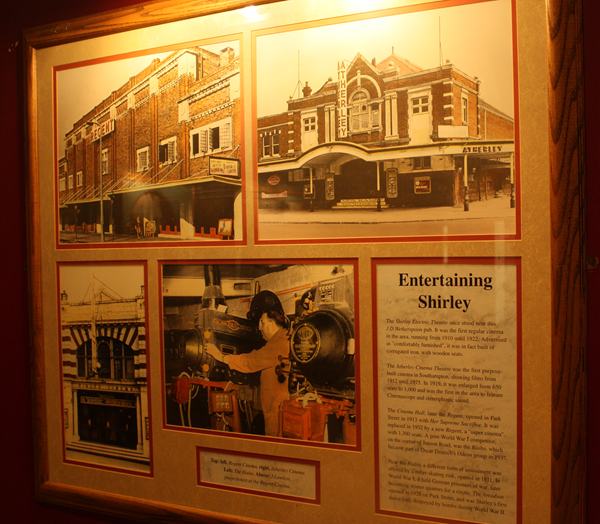
The text reads: The Shirley Electric Theatre once stood near this J.D.Wetherspoon pub. It was the first regular cinema in the area, running from 1910 until 1922. Advertised as “comfortably furnished”, it was in fact built of corrugated iron, with wooden seats.
The Atherley Cinema Theatre was the first purpose built cinema in Southampton, showing films from 1912 until 1975. In 1919, it was enlarged from 650 seats to 1000 and was the first in the area to feature Cinemascope and stereophonic sound.
The Cinema Hall, later the Regent, opened in Park Street in 1913 with Her Supreme Sacrifice. It was replaced in 1932 by a new Regent, a “super cinema”, with 1300 seats. A post-World War I competitor, on the corner of Janson Road, was the Rialto, which became part of the Oscar Deutsch’s Odeon group in 1937.
Near the Rialto, a different form of amusement was offered by a roller-skating rink, opened in 1911. In World War I, it held German prisoners of war, later becoming winter quarters for a circus. The Arcadian opened in 1928 on Park Street, and was Shirley’s first dance-hall, destroyed by bombs during World War II.
Top: left, Regent Cinema, right, Atherley Cinema
Left: The Rialto
Above: J.Lawless, projectionist at the Regent Cinema.
Framed drawings and text about The Polygon Hotel.
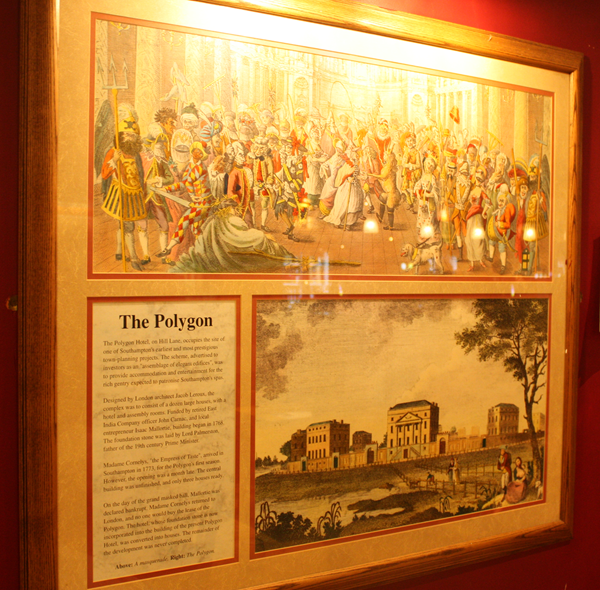
The text reads: The Polygon Hotel, on Hill Lane, occupies the site of one of Southampton’s earliest and most prestigious town-planning projects. The scheme, advertised to investors as an “assemblage of elegant edifices”, was to provide accommodation and entertainment for the rich gentry expected to patronise Southampton’s spas.
Designed by London architect Jacob Leroux, the complex was to consist of a dozen large houses, with a hotel and assembly rooms. Funded by retired East India Company officer John Carnac, and local entrepreneur Isaac Mallortie, building began in 1768. The foundation stone was laid by Lord Palmerston, father of the 19th century prime Minister.
Madame Cornely’s, “the Empress of Taste”, arrived in Southampton in 1773, for the Polygon’s first season. However, the opening was a month late. The central building was unfinished and only three houses ready.
On the day of the grand masked ball, Mallortie was declared bankrupt. Madame Cornely’s returned to London, and no one would buy the lease of the Polygon. The hotel, whose foundation stone is now incorporated into the building of the present Polygon Hotel, was converted into houses. The remainder of the development was never completed.
Above: A masquerade
Right: The Polygon.
A framed print and text about The Bright Water Inn.
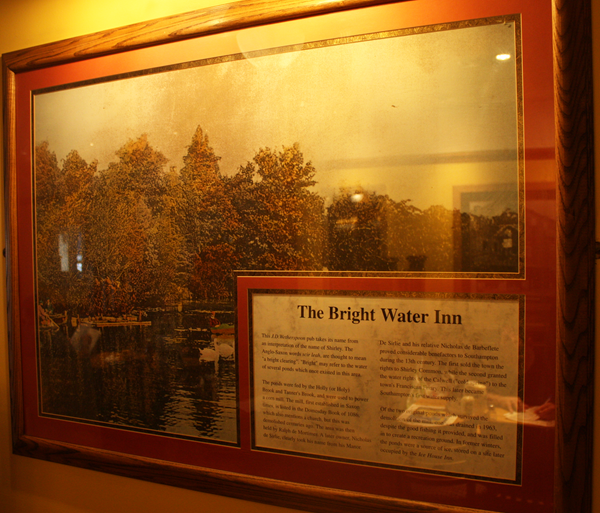
The text reads: This J.D.Wetherspoon pub takes its name from an interpretation of the name Shirley. The Anglo-Saxon words scir leah, are thought to mean “a bright clearing”. “Bright” may refer to the water of several ponds which once existed in this area.
The ponds were fed by the Holly (or Holy) Brook and Tanner’s Brook, and were used to power a corn mill. The mill, first established in Saxon times, is listed in the Domesday Book of 1086, which also mentions a church, but this was demolished centuries ago. The area was then held by Ralph de Mortimer. A later owner Nicholas de Sirlie, clearly took his name from his manor.
De Sirlie and his relative Nicholas de Barbeflete proved considerable benefactors to Southampton during the 13th century. The first sold the town the rights to Shirley Common, while the second granted the water rights of the Calwell (“cold spring”) to the town’s Franciscan Friary. This later became Southampton’s first water supply.
Of the two original ponds which survived the demolition of the mill, one was drained in 1963, despite the good fishing it provided, and was filled in to create a recreation ground. In former winters, the ponds were a source of ice, stored on a site later occupied by the Ice House Inn.
Framed photographs and text about transport in Shirley.
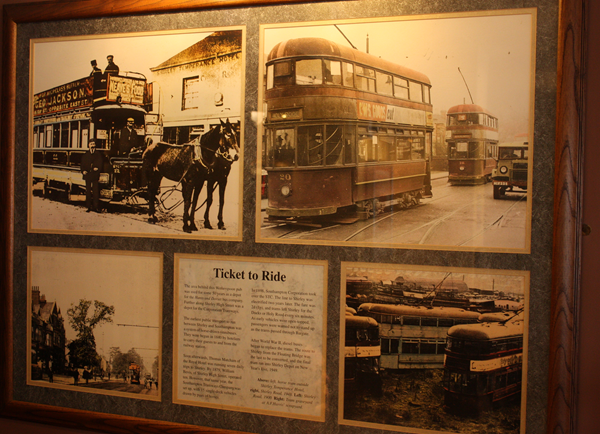
The text reads: The area behind this Wetherspoon pub was used for some 50 years as a depot for the Hants and Dorset bus company. Further along Shirley High Street was a depot for the Corporation Tramways.
The earliest public transport to run between Shirley and Southampton was a system of horse-drawn omnibuses. They were begun in 1840 by hoteliers to carry their guests to and from the railway station.
Soon afterwards, Thomas Matcham of the Royal Hotel, was running seven daily trips to Shirley. By 1879, William Bevis, of Shirley High Street, operated ten. However, that same year, the Southampton Tramways Company was set up, with 15 single-deck vehicles drawn by pairs of horses.
In 1898, Southampton Corporation took over the STC. The line to Shirley was electrified two years later. The fare was 2d (1p), and trams left Shirley for the Docks or Holy Rood every six minutes. As early vehicles were open-topped, passengers were warned not to stand up as the trams passed through Bargate.
After World War II, diesel buses began to replace the trams. The route to Shirley from the Floating Bridge was the last to be converted, and the final tram ran into Shirley Depot on New Year’s Eve, 1949.
Above: left, horse tram outside Shirley Temperance Hotel, right, Shirley Road, 1948
Left: Shirley Road, 1900
Right: Tram graveyard at A.F.Harris’ scrapyard.
Framed photographs of women workers in the strawberry fields of Shirley during World War 1.
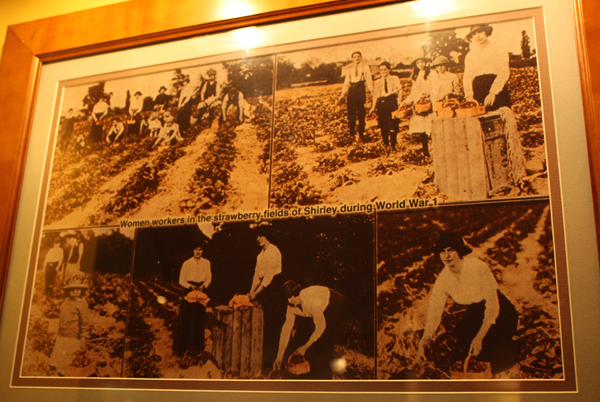
Framed drawings of Albert College and Hollybrook House.
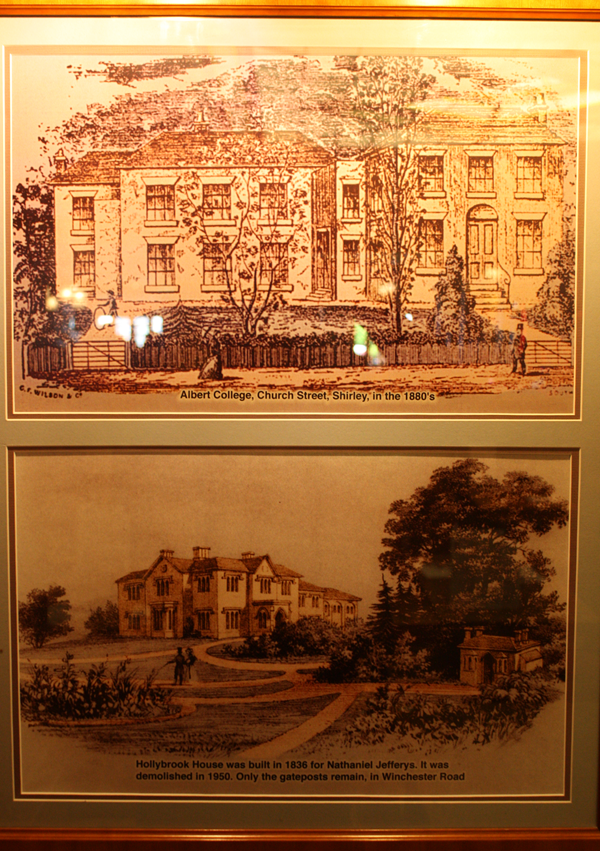
Top: Albert College, Church Street, Shirley, in the 1880’s
Bottom: Hollybrook House was built in 1836 for Nathaniel Jefferys. It was demolished in 1950. Only the gateposts remain, in Winchester Road.
A framed photograph of Infirmary Lane, Shirley c.1910.
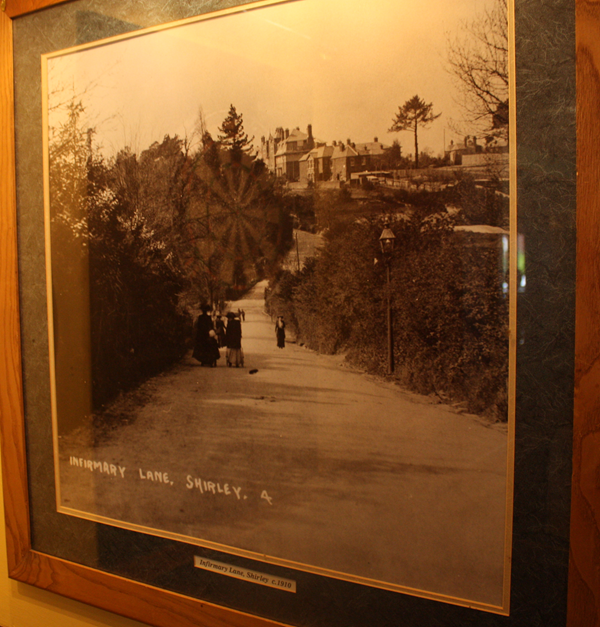
Framed photographs of Shirley Road.
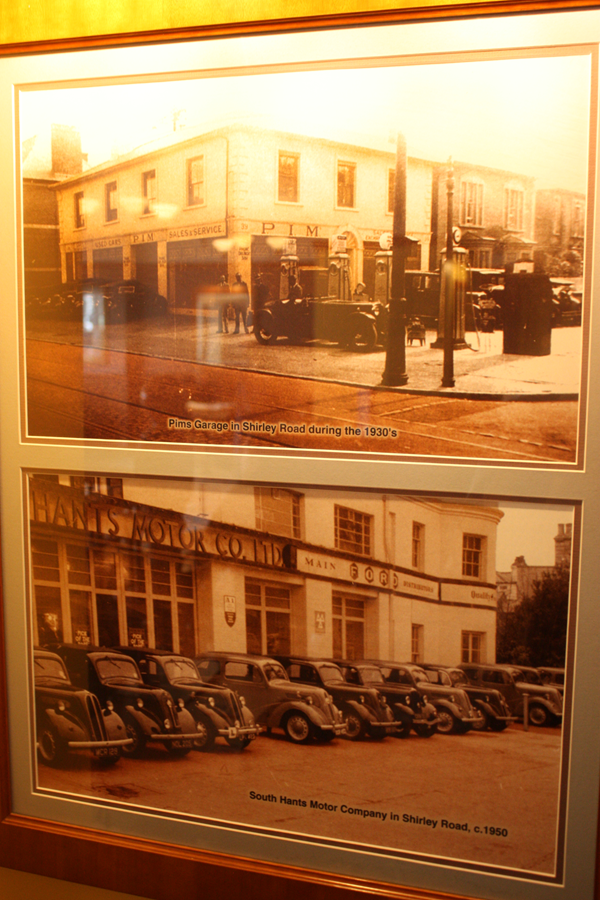
Top: Pims Garage in Shirley Road during the 1930’s
Bottom: South Hants Motor Company in Shirley Road, c.1950.
Framed drawings of Shirley House.
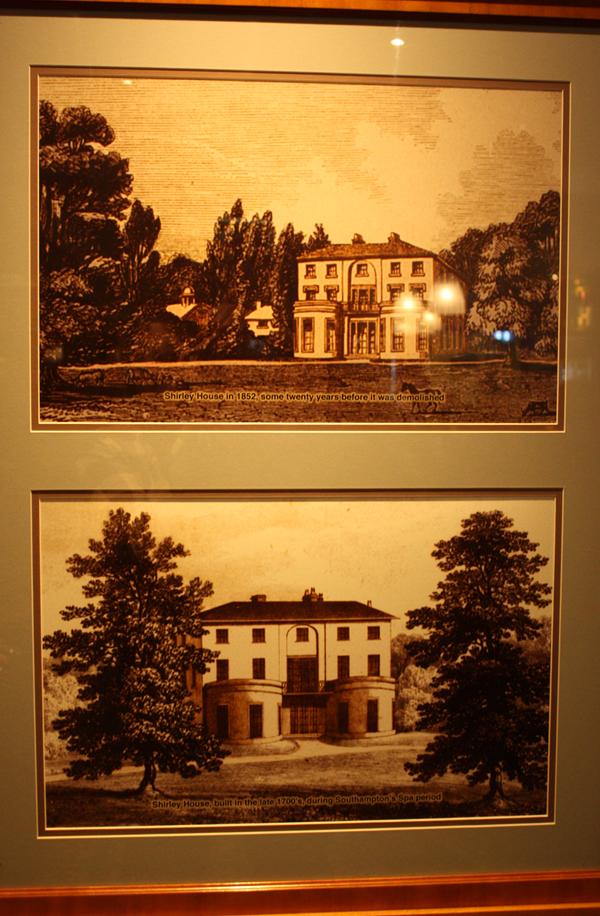
Top: Shirley House in 1852, some twenty years before it was demolished
Bottom: Shirley House, built in the late 1700’s, during Southampton’s Spa period.
External photograph of the building – main entrance.
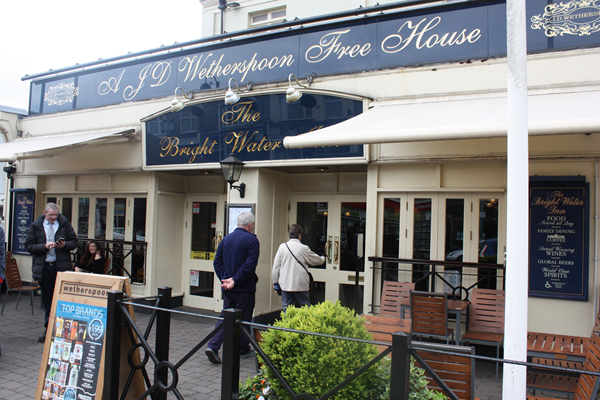
If you have information on the history of this pub, then we’d like you to share it with us. Please e-mail all information to: pubhistories@jdwetherspoon.co.uk